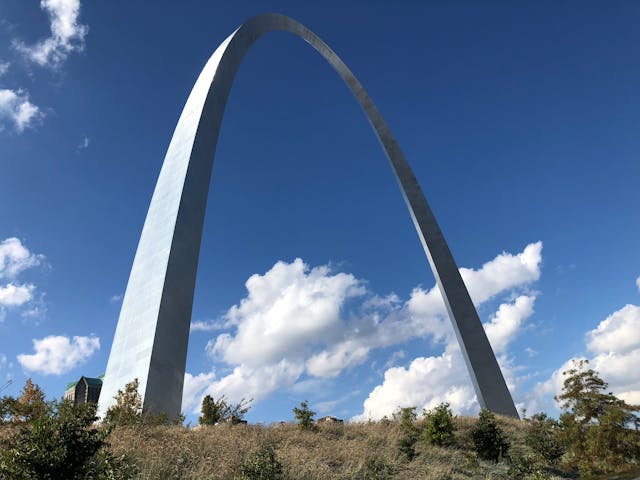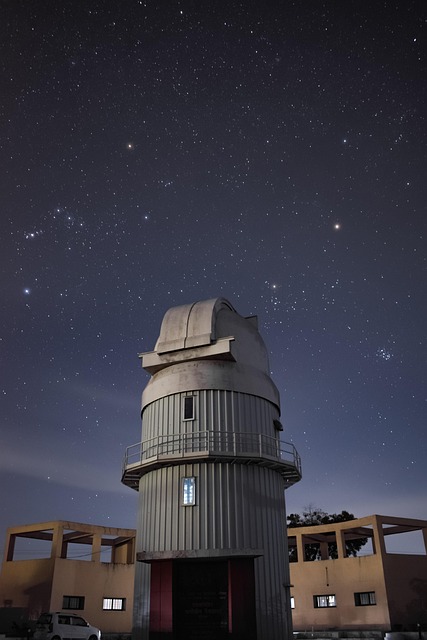Hey there! Ever wonder what’s out there, way beyond our own Milky Way? Well, the James Webb Space Telescope (JWST) is giving us some incredible answers, and it all starts with a distant galaxy discovery. This remarkable instrument is letting us peer back in time, almost to the very beginning, and what it’s showing us is nothing short of mind-blowing. We’re talking about galaxies that formed incredibly early in the universe’s history, and understanding them is key to unlocking the secrets of how everything came to be.
Table of Contents
- Unveiling the Cosmos: The James Webb Telescope and the Farthest Galaxy Ever Seen
- Deciphering the Light: Unraveling the Secrets of MoM-z14 and Early Galaxy Formation
- The Cosmic Lens: Gravitational Lensing and the Quest for Primordial Objects
- Looking Ahead: The Future of Cosmic Exploration and the Legacy of the JWST
The JWST’s recent distant galaxy discovery of MoM-z14, the most remote galaxy ever observed, is just the tip of the iceberg. This find, along with others, is challenging our existing models of the universe. The JWST is revealing that these early galaxies are brighter than we thought, and the implications are huge. This is rewriting textbooks and making us rethink how stars and galaxies formed in the early cosmos.
We also Published
Unveiling the Cosmos: The James Webb Telescope and the Farthest Galaxy Ever Seen
The boundless expanse of the cosmos continues to beckon humanity, and with each technological leap, we peer further into the primordial tapestry of existence. The James Webb Space Telescope (JWST), a marvel of engineering and a testament to human curiosity, has once again shattered observational boundaries. Its latest triumph? The discovery of MoM-z14, the most distant galaxy ever observed, a celestial beacon that hails from a mere 280 million years after the Big Bang. This extraordinary find, a product of the Mirage survey, offers an unprecedented glimpse into the nascent universe, a time when the first galaxies were coalescing from the cosmic dust. The implications of this discovery are profound, challenging existing models and igniting a renewed fervor for understanding the universe’s genesis. The JWST’s infrared prowess, coupled with innovative techniques like gravitational lensing, is rewriting the textbooks and reshaping our comprehension of cosmic evolution. The secrets held within MoM-z14 and its ilk promise to illuminate the very foundations of our existence.
The significance of MoM-z14 lies not only in its distance but also in its surprising luminosity. The JWST has consistently revealed that early galaxies are brighter than anticipated, a phenomenon that challenges prevailing theories about the rate of star formation in the early universe. The galaxy’s redshift of z = 14.4 indicates that its light has been stretched over 14 times due to the universe’s expansion, a testament to the immense distances involved. This redshift allows astronomers to peer back in time, observing the galaxy as it appeared billions of years ago. The research team, led by Rohan Naidu from MIT, has meticulously analyzed the data, and their findings, shared on the arXiv preprint server and submitted to the Open Journal of Astrophysics, are poised to reshape our understanding of the early universe. The discovery of MoM-z14, alongside other luminous early galaxies like JADES-GS-z14-0, compels us to reconsider our models and to delve deeper into the processes that governed the formation of the first stars and galaxies.
Deciphering the Light: Unraveling the Secrets of MoM-z14 and Early Galaxy Formation
The genesis of MoM-z14 is a tale woven from the threads of stellar nurseries and the cosmic dance of gravity. Unlike some galaxies that are powered by supermassive black holes, MoM-z14’s brilliance stems from dense clusters of young, intensely bright stars. This observation is particularly intriguing, as it suggests that star formation in the early universe may have been more efficient and rapid than previously believed. The JWST’s ability to discern these details is a game-changer, surpassing the capabilities of its predecessors, the Hubble and Spitzer telescopes. Its infrared vision allows it to penetrate the cosmic dust clouds that obscure the view, revealing the inner workings of galaxies in unprecedented detail. For instance, the telescope has unveiled a clear stellar bar at the center of EGS23205, a barred spiral galaxy, challenging existing assumptions about the evolution of spiral galaxies. This ability to observe the fine structure of early galaxies is crucial for understanding how they assembled and evolved over time, providing vital clues about the processes that shaped the universe we see today. The data from MoM-z14 and other early galaxies is providing a new perspective on the cosmos.
The chemical composition of MoM-z14 adds another layer of complexity to the narrative. The galaxy is notably rich in nitrogen relative to carbon, a characteristic shared by ancient globular clusters surrounding the Milky Way. This similarity suggests a continuity in star-forming environments over billions of years, hinting that the fundamental processes of star formation have remained remarkably consistent throughout cosmic history. Furthermore, the study distinguishes between different types of early galaxies, with some, like MoM-z14, being compact and nitrogen-rich, while others are more dispersed and nitrogen-poor. The former may represent a new class of “Little Red Dots,” offering valuable clues about the initial stages of star formation in the universe. The ongoing analysis of MoM-z14 and other early galaxies is not merely about cataloging celestial objects; it is about reconstructing the cosmic timeline, understanding the building blocks of the universe, and tracing the origins of the elements that make up everything we see around us. The JWST’s continued observations promise to reveal even more about these distant and enigmatic galaxies, deepening our understanding of the cosmos.
The Cosmic Lens: Gravitational Lensing and the Quest for Primordial Objects
The JWST’s capabilities are further enhanced by the phenomenon of gravitational lensing, a cosmic magnifying glass that allows astronomers to peer even deeper into the early universe. The light from distant galaxies, such as MoM-z14, is amplified and magnified by the gravitational fields of massive objects, like the Abell 2744 cluster. This effect, predicted by Einstein’s theory of general relativity, allows astronomers to observe objects that would otherwise be too faint to detect. The intervening mass acts as a lens, bending and focusing the light from the background galaxies, effectively increasing their apparent brightness and size. This technique is particularly useful for studying the earliest galaxies, which are intrinsically faint and distant. The JWST’s ability to utilize gravitational lensing is a testament to the power of combining advanced technology with fundamental physics. It is not merely about seeing farther; it is about seeing with greater clarity and detail, allowing astronomers to study the properties of these primordial objects with unprecedented precision. The combination of the JWST’s infrared capabilities and gravitational lensing is a powerful tool in the quest to understand the formation of the first galaxies.
The Abell 2744 cluster, in particular, has become a focal point for studying early galaxies. The cluster’s immense gravitational field acts as a natural telescope, magnifying the light from distant objects behind it. This allows astronomers to study galaxies that would otherwise be beyond the reach of even the most powerful telescopes. The JWST’s observations of galaxies near Abell 2744 have provided valuable insights into the properties of early galaxies, including their size, shape, and chemical composition. The use of gravitational lensing is not without its challenges. The magnification effect can distort the images of the galaxies, making it difficult to determine their true shapes and sizes. However, astronomers have developed sophisticated techniques to correct for these distortions, allowing them to reconstruct the images of the galaxies with remarkable accuracy. The continued use of gravitational lensing, combined with the JWST’s advanced capabilities, promises to reveal even more about the early universe, providing a deeper understanding of the processes that shaped the cosmos. This technique is not only useful for observing early galaxies, but it also allows astronomers to study the distribution of dark matter, which is responsible for the gravitational lensing effect.
Looking Ahead: The Future of Cosmic Exploration and the Legacy of the JWST
The discovery of MoM-z14 and the ongoing revelations from the JWST represent a paradigm shift in our understanding of the universe. The telescope has already reshaped our comprehension of galaxy formation, and it is likely to continue breaking its own records in the years to come. Future observatories, such as the Extremely Large Telescope (ELT) and the Nancy Grace Roman Space Telescope, are poised to build upon the JWST’s legacy, pushing the boundaries of cosmic exploration even further. The ELT, with its massive mirror, will be able to observe even fainter and more distant objects, while the Roman Space Telescope will provide a wider field of view, allowing astronomers to study vast areas of the sky. These future observatories will complement the JWST, providing a more comprehensive view of the universe. The JWST’s impact extends beyond scientific discovery; it has also inspired a new generation of scientists and engineers, fostering a renewed sense of wonder and curiosity about the cosmos. The telescope’s images, with their breathtaking beauty and scientific significance, have captured the imagination of people around the world.
The legacy of the JWST will be measured not only by its scientific discoveries but also by its impact on our understanding of our place in the universe. The telescope’s ability to observe the earliest galaxies, to peer into the hearts of stellar nurseries, and to study the chemical composition of distant objects has provided unprecedented insights into the processes that shaped the cosmos. The JWST’s discoveries have challenged existing models, prompting scientists to rethink their assumptions and to develop new theories. The telescope’s observations have also revealed the interconnectedness of the universe, showing how the processes that occurred in the early universe continue to influence the cosmos today. The JWST’s impact will be felt for decades to come, as scientists continue to analyze its data and to build upon its discoveries. The telescope’s legacy is one of scientific triumph, technological innovation, and a profound appreciation for the beauty and complexity of the universe. The JWST is a testament to human ingenuity and our unyielding desire to explore the unknown.
We also Published
RESOURCES
- Earliest, most distant galaxy discovered with James Webb Space …
- Oxygen discovered in most distant known galaxy | ESO
- Oxygen discovered in most distant known galaxy
- Earliest, most distant galaxy discovered with James Webb Space …
- CfA Astronomers Help Find Most Distant Galaxy Using James Webb …
- Webb Telescope spots the two most distant galaxies ever seen at …
- NASA’s James Webb Space Telescope Finds Most Distant Known …
- Oxygen found in the most distant known galaxy | CNN
- James Webb: Earliest and most distant galaxy ever observed
- How astronomers used gravitational lensing to discover 44 new …






0 Comments